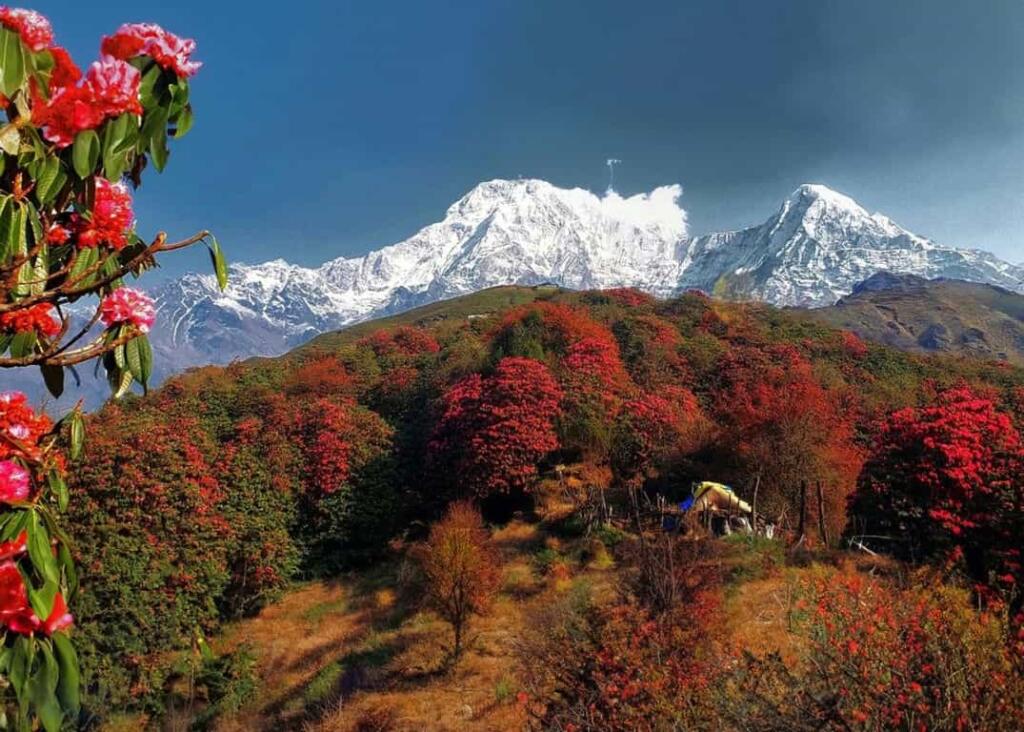Medicinal plants have played a pivotal role in global healthcare systems for centuries, offering remedies for various ailments. According to the World Health Organization (WHO), a significant portion of the world’s population relies on medicinal plants for their primary healthcare needs, highlighting their enduring importance. Across ancient Indian texts like Atharvaveda, Ramayana, and Mahabharata, as well as scholarly works such as Charaka Samhita and Sushruta Samhita, the utility of these plants is extensively documented.
The Medicinal Bounty of the Indian Himalayan Region
The Indian Himalayan region stands out as a biodiversity hotspot, boasting a staggering array of flora. With around 8,000 species of angiosperms, 44 species of gymnosperms, 600 species of pteridophytes, 1737 species of bryophytes, 1,159 species of lichens, and 6,900 species of fungi, this region is a treasure trove of biological diversity. Notably, it is home to 1,748 species of medicinal plants, making it a major repository of herbal wealth. However, the grim reality looms as approximately 436 of these plant species face the threat of endangerment.
Significance of Medicinal Plants in the Indian Himalayan Region
The Indian Himalayan region emerges as a crucial hub for medicinal plants, contributing substantially to India’s medicinal flora. Roughly half of India’s medicinal plant species originate from this region, with around 30 percent being endemic to its diverse landscapes. The indigenous and traditional knowledge systems prevalent in this region have long recognized the therapeutic potential of these plants, which not only cater to healthcare needs but also contribute significantly to the livelihoods of local communities.
Challenges to Medicinal Plant Conservation
Despite their immense value, medicinal plants in the Indian Himalayan region face numerous threats, endangering their survival. Climate change, characterized by rising temperatures and erratic rainfall patterns, poses a significant challenge by altering the distribution and diversity of these plants. Additionally, uncontrolled harvesting, habitat destruction due to deforestation and agricultural expansion, and forest fires further exacerbate the plight of medicinal plants, pushing many towards the brink of extinction.
Conservation Efforts and Recommendations
Efforts to conserve Himalayan medicinal plants are underway, spearheaded by various governmental and non-governmental organizations. Initiatives encompass conservation strategies, cultivation programs, and awareness campaigns aimed at safeguarding these invaluable resources. Recommendations include promoting cultivation among local communities, establishing genetic resource centers, documenting plant diversity, integrating medicinal plant education into school curricula, and embracing modern cultivation techniques for sustainable production.
Conclusion
In conclusion, the conservation of Himalayan medicinal plants is imperative for maintaining ecological equilibrium and preserving traditional healthcare practices. A concerted, multi-faceted approach involving research, community engagement, and awareness initiatives is crucial to safeguarding these botanical treasures for future generations. By nurturing and protecting this rich heritage, we ensure the continued availability of natural remedies that have sustained human health and well-being for centuries.
Expanding the Scope: Harnessing the Healing Power of Himalayan Medicinal Plants
In the vast expanse of the Indian Himalayan region lies a wealth of botanical treasures, each leaf and root holding the potential to heal and restore. The ancient wisdom encapsulated in texts like the Atharvaveda and the Ramayana reverberates through the mountains, echoing the reverence for nature’s pharmacy that has sustained generations.
Unveiling Nature’s Pharmacy: A Journey Through the Himalayas
Traversing the rugged terrain of the Indian Himalayas is akin to embarking on a botanical odyssey. Here, amidst the towering peaks and verdant valleys, lies a cornucopia of medicinal plants, each with its unique properties and healing virtues. From the vibrant blooms of Buransh to the aromatic allure of Kapoor Kachri, the diversity of flora is unparalleled, offering a treasure trove of remedies waiting to be discovered.
Preserving the Past, Nurturing the Future: The Imperative of Conservation
Yet, amidst this abundance, lies a pressing concern – the threat of endangerment looming over countless species. Climate change casts its ominous shadow, disrupting the delicate balance of ecosystems and jeopardizing the survival of medicinal plants. Unregulated harvesting and habitat destruction further exacerbate the situation, pushing these invaluable resources towards the brink of extinction.
A Call to Action: Sowing the Seeds of Change
In the face of these challenges, concerted efforts are underway to conserve and protect Himalayan medicinal plants. Governmental and non-governmental organizations alike have rallied together, implementing conservation strategies and cultivation programs aimed at safeguarding these botanical treasures. From establishing genetic resource centers to promoting community-led initiatives, the focus is on nurturing these plants and preserving their legacy for generations to come.
Embracing Innovation: Cultivating Sustainability
Innovation lies at the heart of sustainable conservation efforts. Modern techniques such as hydroponics and aeroponics offer promising avenues for medicinal plant cultivation, minimizing water usage and maximizing space efficiency. By harnessing technology in harmony with tradition, we pave the way for a sustainable future where medicinal plants thrive and flourish.
Educating and Empowering: Cultivating a Culture of Conservation
Education plays a pivotal role in fostering a culture of conservation. Integrating lessons on medicinal plants into school curricula empowers the next generation with the knowledge and appreciation of nature’s bounty. Additionally, community-driven initiatives and citizen science projects provide opportunities for active participation, enabling individuals to become stewards of their environment.
Looking Ahead: A Future Rooted in Tradition
As we navigate the complexities of the modern world, it is essential to stay rooted in tradition. The conservation of Himalayan medicinal plants not only ensures ecological balance but also preserves ancient healing practices that have stood the test of time. By embracing innovation, education, and community engagement, we embark on a journey towards a future where nature’s pharmacy thrives, enriching lives and healing communities.
ALSO READ: Beyond Growth: Prioritising Environment Sustainable Development Strategies
